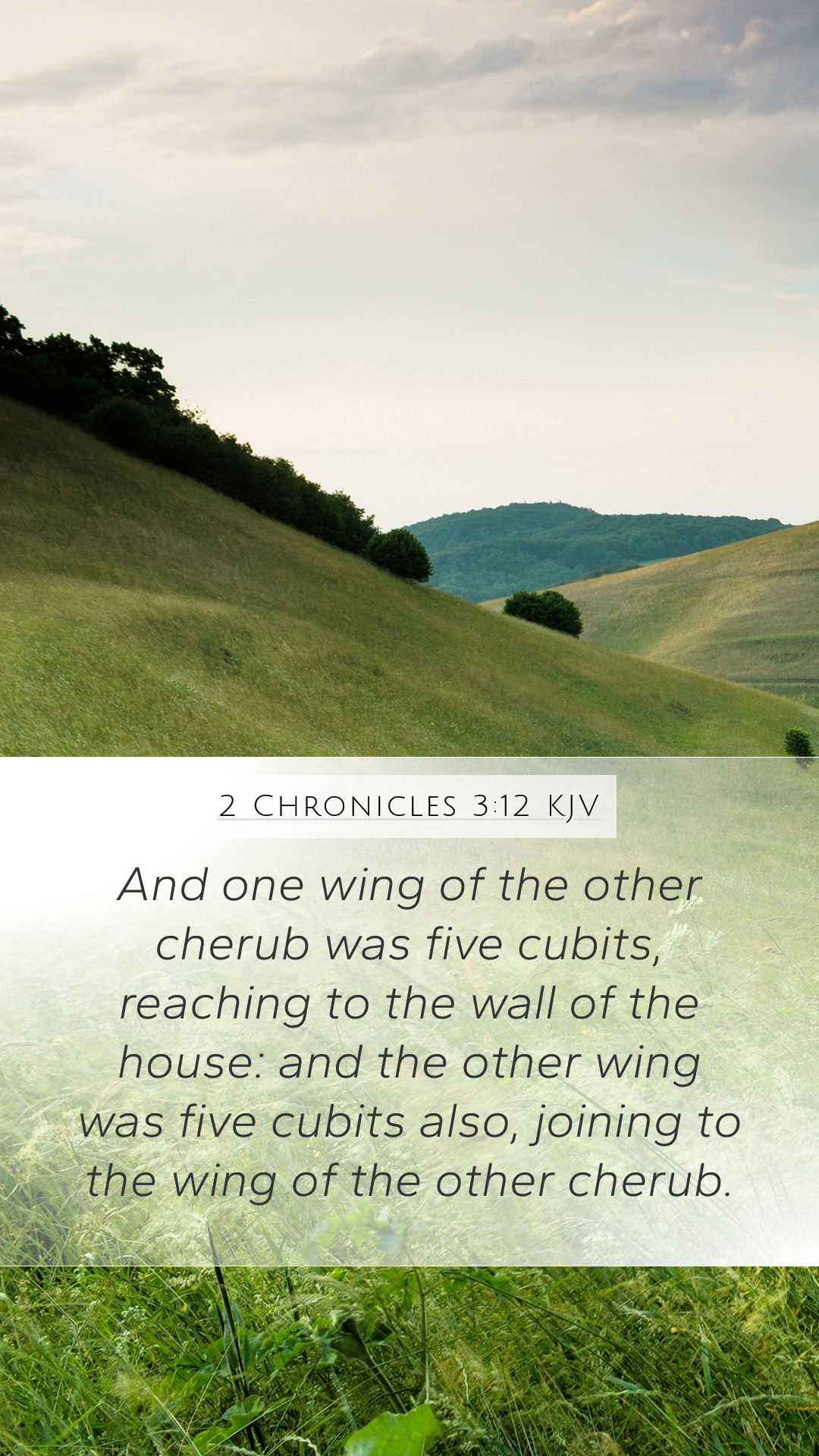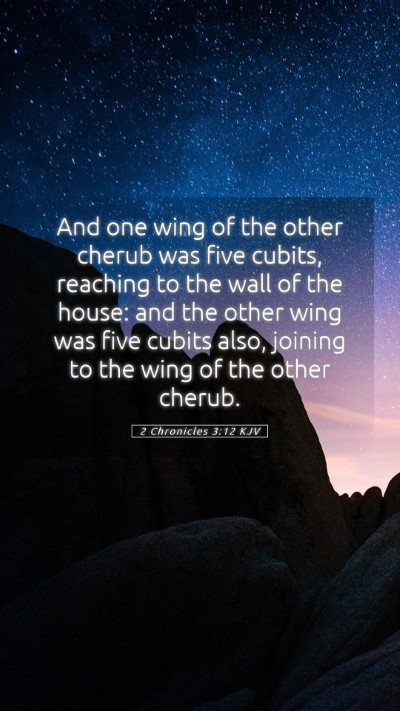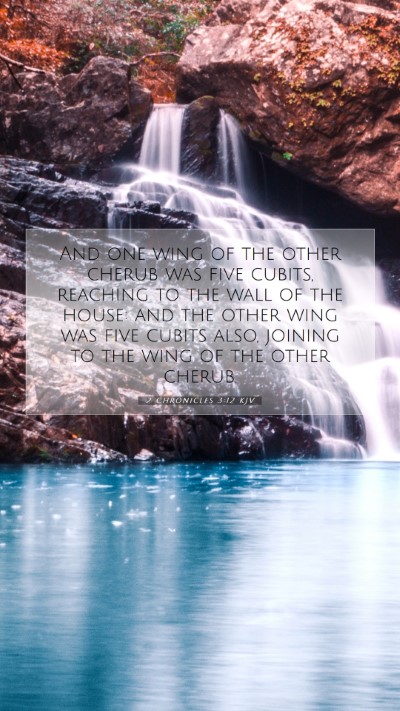Understanding 2 Chronicles 3:12
In this article, we explore the profound meanings and interpretations of 2 Chronicles 3:12, shedding light on its significance within the context of Scripture. This verse is a pivotal aspect of the biblical narrative and warrants a thorough exegesis for a deeper understanding of God’s word.
Context and Background
2 Chronicles is a book in the Old Testament that chronicles the history of Israel, focusing particularly on the reigns of David and Solomon and the building of the Temple. This verse, part of God’s prescription for the design of the Temple, emphasizes the greatness of the structure and the materials dedicated for God's glory.
Verse Analysis
2 Chronicles 3:12 states:
“And above it stood the cherubims, the spread wings of the cherubims twenty cubits long; one wing of the one cherub was five cubits, touching the wall of the house: and the other wing was likewise five cubits, touching the wing of the other cherub.”
Key Themes
- Divine Presence: The cherubim signify God’s presence and protection over His dwelling place.
- Worship and Awe: The magnitude of the wings and structure illustrate the reverence due to the Holy God.
- Symbolism: The cherubim symbolize both guardianship of divine truth and the majestic nature of God’s holiness.
Commentary Insights
Matthew Henry
Henry suggests that the cherubim standing in the holy place illustrate God's guardianship and majesty. The enormous wingspan is a visual representation of God's omnipotence and the heavenly beings’ role in worship.
Albert Barnes
Barnes elaborates on the dimensions, emphasizing that the vastness of the wings speaks to the grandeur of God’s heavenly presence. He interprets their positioning as a reminder to the Israelites of the sacredness of the space they were entering.
Adam Clarke
Clarke provides a detailed account of the symbolism of cherubim in the Scriptures. He notes that these beings are not only involved in worship but also serve as mediators of God’s glory, further emphasizing the holiness of the sanctuary within the Temple.
Biblical Significance
The specific measurements and descriptions underline important biblical themes:
- God’s Majesty: The grandeur of the Temple signifies the greatness of God compared to earthly structures.
- Worship: The cherubim demonstrate that genuine worship involves recognizing the holiness and majesty of God.
- Intercession: The placement of cherubim signifies God’s willingness to commune with His people while reminding them of His pervasive holiness.
Cross References
For further study and cross-reference, consider the following related verses:
- Exodus 25:18-22: Description of cherubim on the Mercy Seat.
- Ezekiel 10:1-22: Vision of cherubim around God's throne.
- Hebrews 9:5: Reference to the cherubim in the Holy of Holies.
Conclusion
In summary, 2 Chronicles 3:12 provides rich insights into the nature of God, the seriousness of worship, and the importance of understanding the divine characteristics reflected in the Temple’s construction. The study of this verse not only covers its historical context but also urges contemporary believers to recognize the ongoing relevance of worshiping a holy and majestic God.
Application
As modern believers reflect on the meaning of this passage, we are encouraged to:
- Engage in reverent worship: Recognizing God's holiness in our worship experiences.
- Study Scripture: Delving into the word for deeper understanding of His nature and communication.
- Share insights: Engage with others in Bible study groups to explore and discover together the meanings behind such verses.


